Simon & Priscilla Visit France
Today is an exciting day. The Chateau of the Loire Valley are world renowned and most are World Heritage Listed. It is time to discover how the other half live.
We saw the early morning in Tours. We enjoyed toasted baguettes for breakfast. We left at about 8:00am to drive to our first chateau for the day - Chateau Chambord. This is the largest and grandest of the chateaux (for plural add an x) in the Loire Valley. We wanted to avoid the A10 toll road so we chose a longer but much more scenic route alongside the Seine. The “D” roads are the old roads and these
sdodson55
17 chapters
16 Apr 2020
Exploring Royal Palaces
April 17, 2017
|
Loire Valley
Today is an exciting day. The Chateau of the Loire Valley are world renowned and most are World Heritage Listed. It is time to discover how the other half live.
We saw the early morning in Tours. We enjoyed toasted baguettes for breakfast. We left at about 8:00am to drive to our first chateau for the day - Chateau Chambord. This is the largest and grandest of the chateaux (for plural add an x) in the Loire Valley. We wanted to avoid the A10 toll road so we chose a longer but much more scenic route alongside the Seine. The “D” roads are the old roads and these
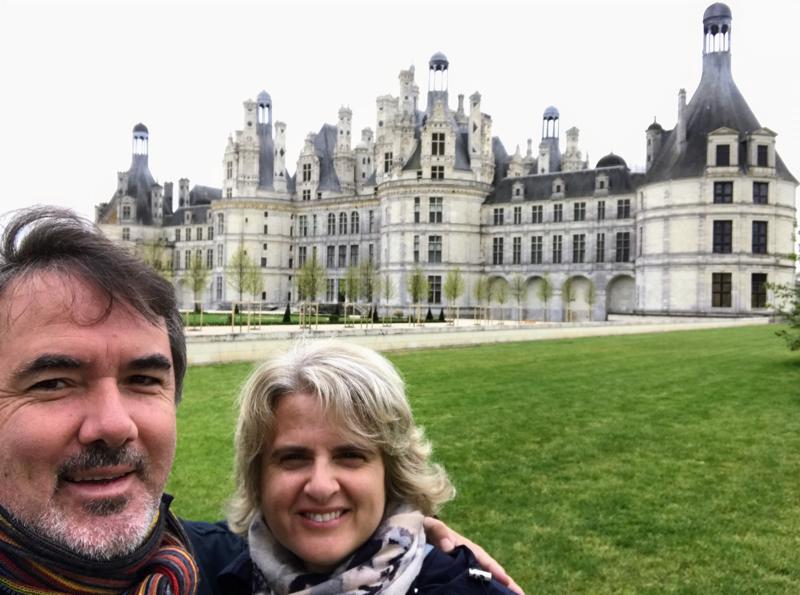
mosey through the countryside and all the hamlets and villages, definitely preferable to the A10 which bulldozes through the country, three lanes wide and 130km/h (yes that is the speed limit on the A10, although vehicles mostly travel at about 140km/h).
It took us about 70 minutes and 20 villages or so to arrive at Chambord. This chateau does not disappoint. In fact, it is impossible to anticipate the scale of this structure. It is crazy big. The amazing double helix spiral staircase in the middle of the “keep” is probably the design of Leonardo da Vinci, although this is unconfirmed because he’s dead and no-one can check with him. But the staircase and square structure is unique amongst castles and relates to some of his design drawings that have been found. In addition, he was living locally in one of the other chateau at the time Chambord was designed. He was living at the expense of the king who was building the chateau, so it is highly likely Leonardo had some input. So the
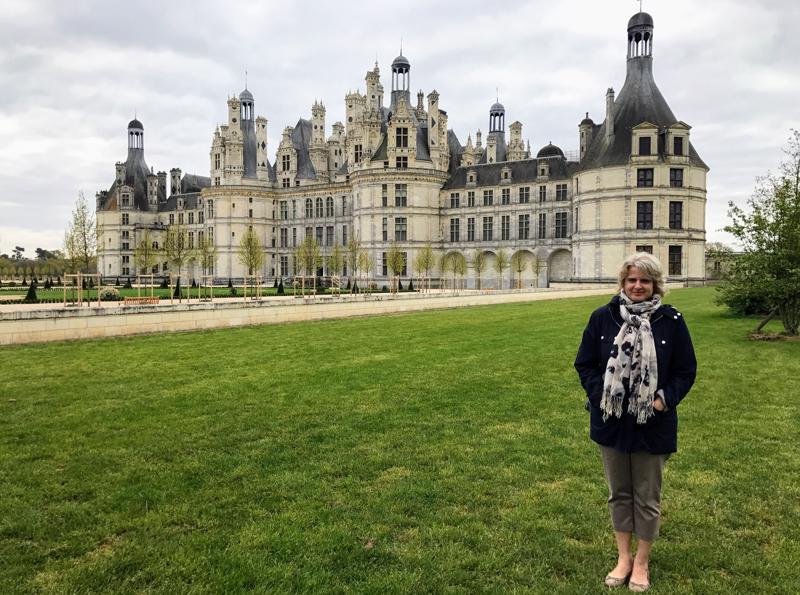
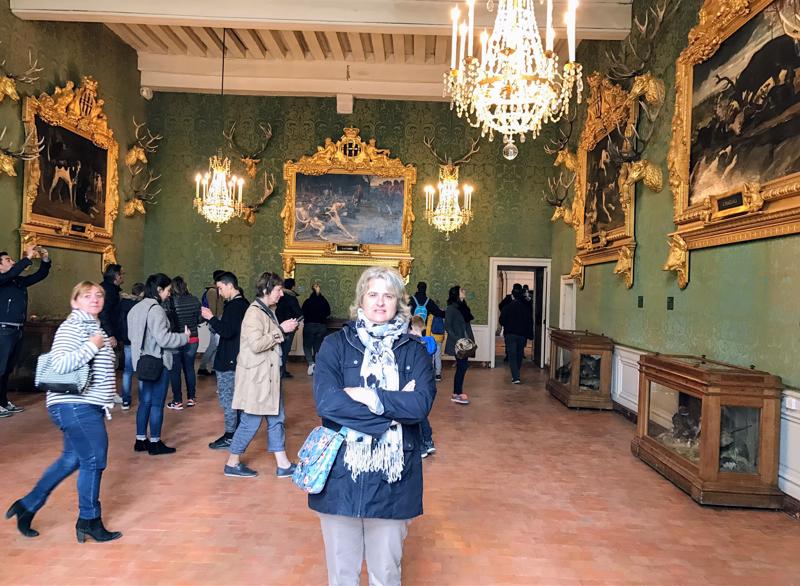
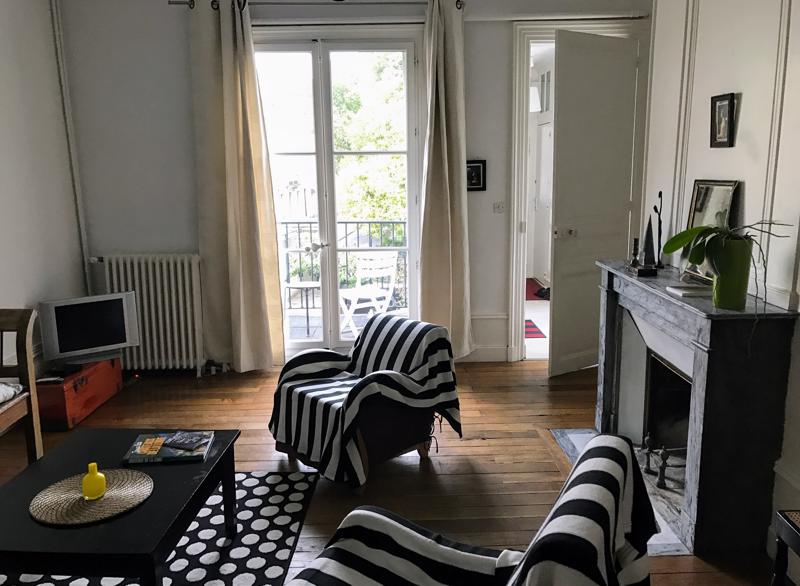
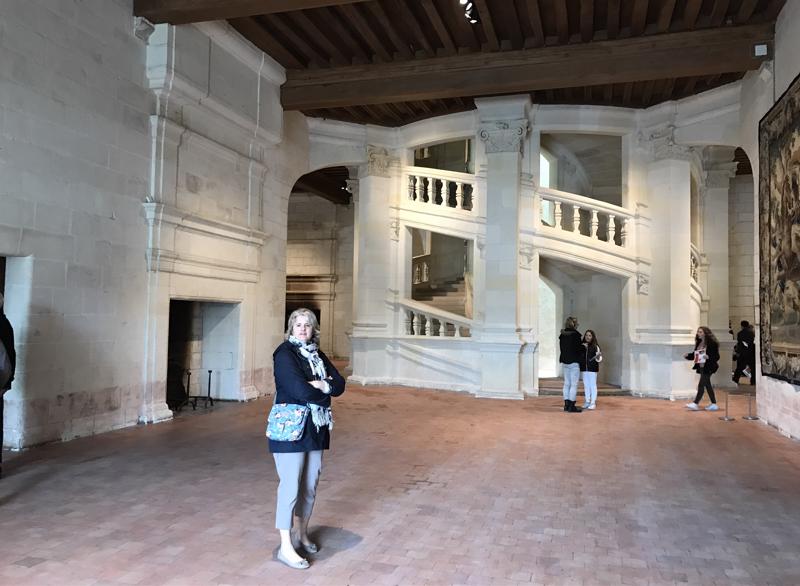
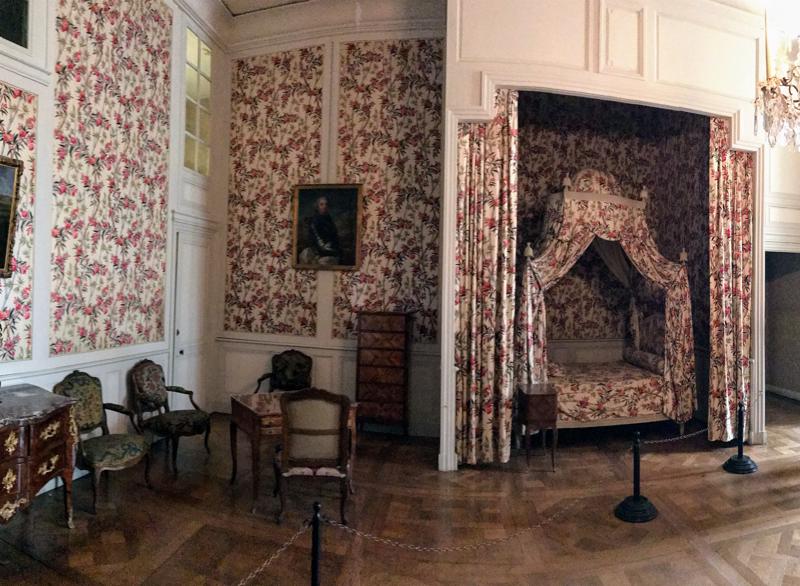
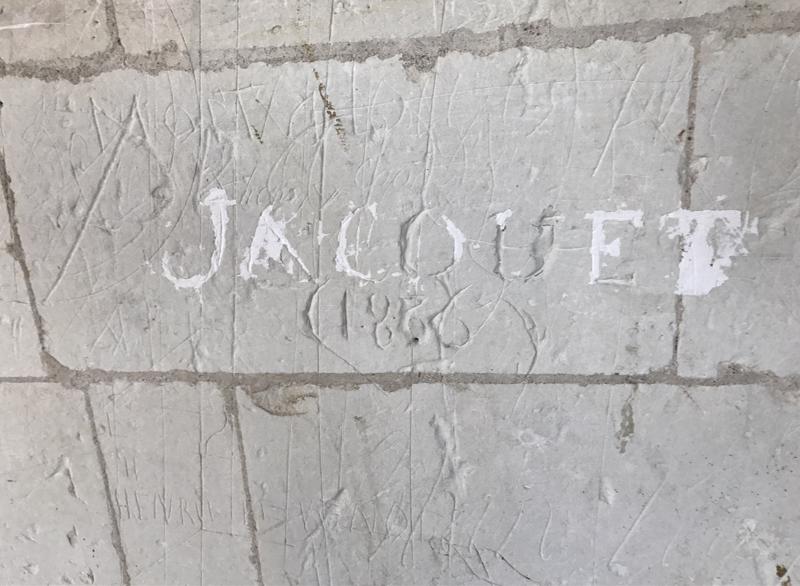
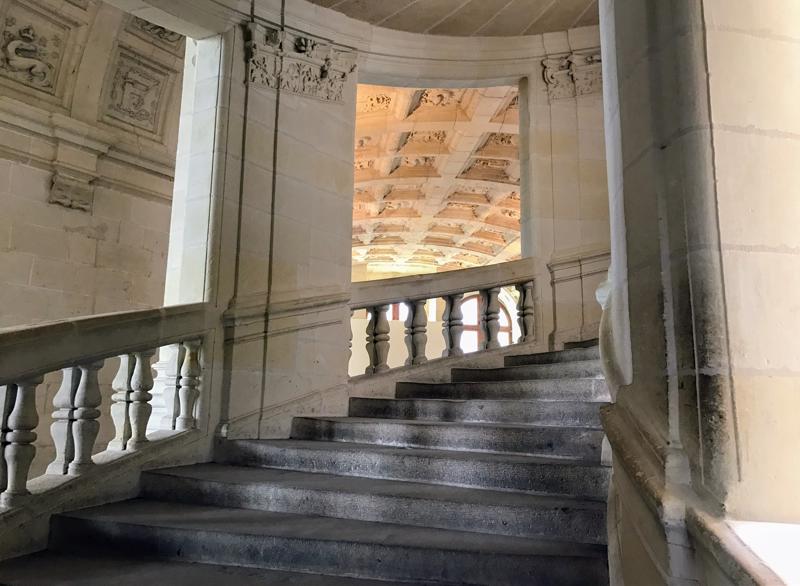
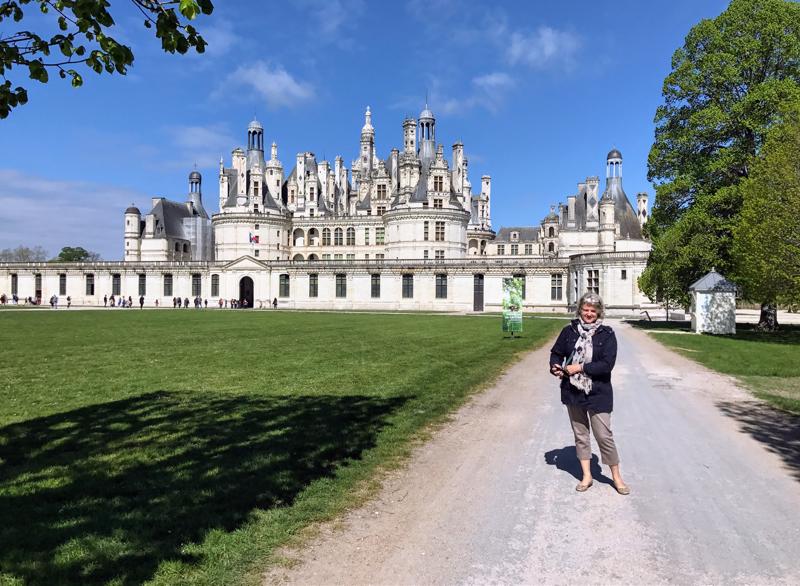
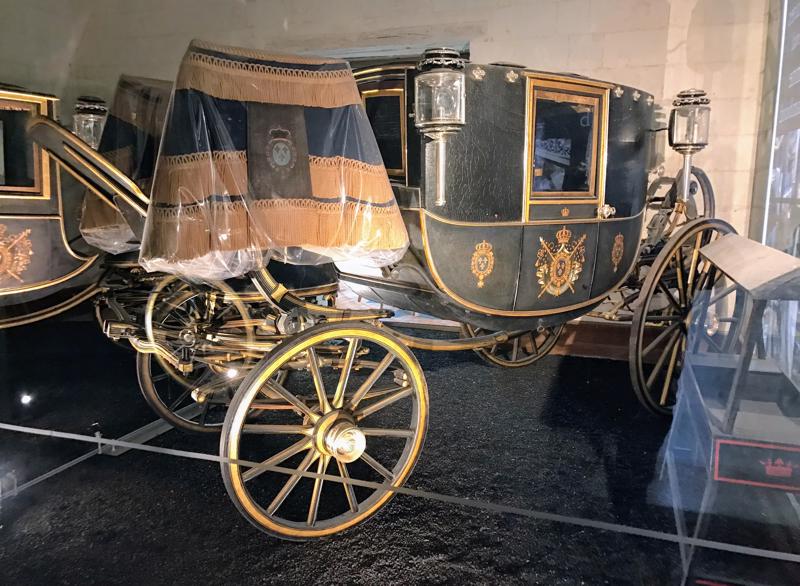

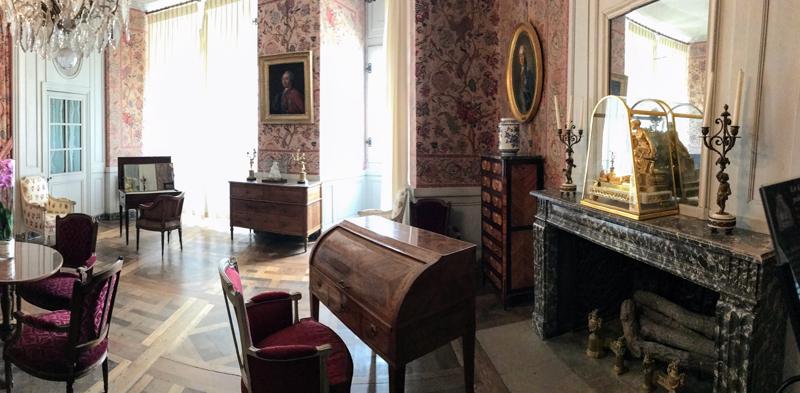
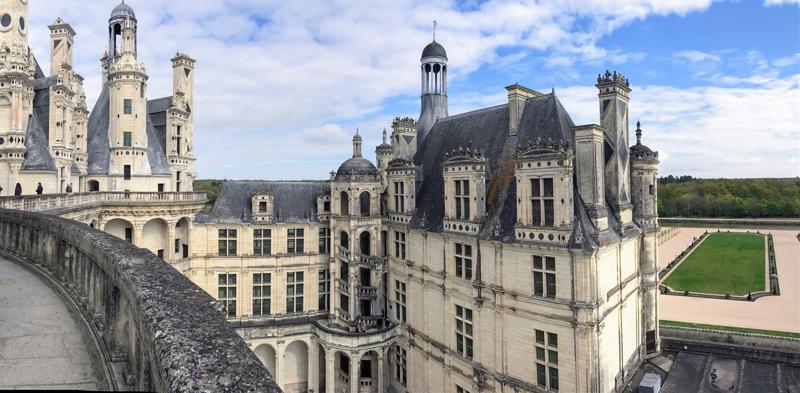
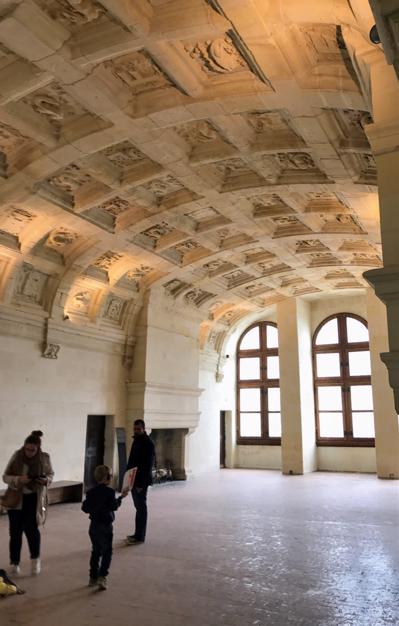
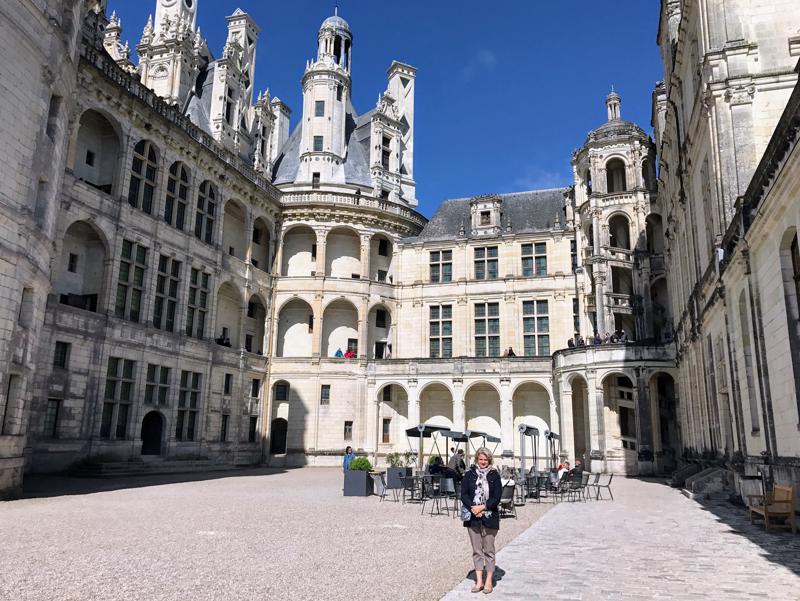
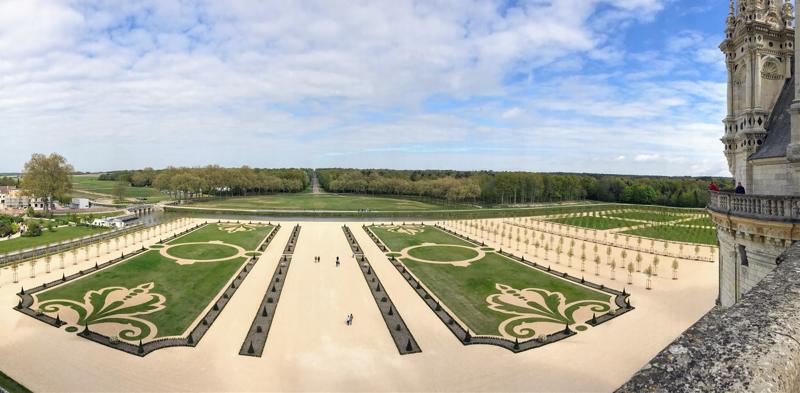
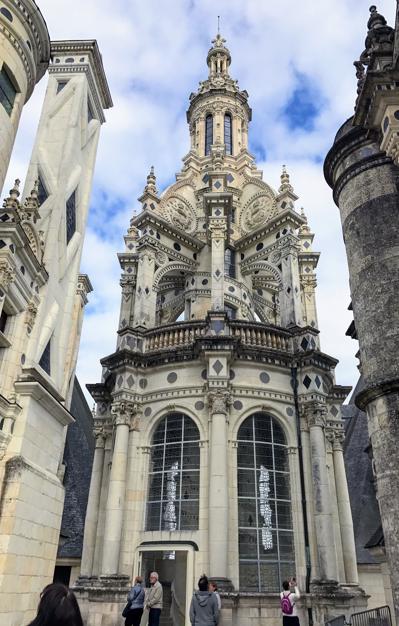

design is really a work of genius.
Chambord is large and would have been difficult to heat. It was built originally as a hunting lodge for the king, but it got extended to way beyond that function. It was not really lived in much over the centuries, which seems a pity for such an amazing building.
The second chateau on our agenda was Chateau Cheverny, a much smaller palace and privately owned by the one family almost continuously for over 600 years. The current family members live in the third storey which is closed to the public. The first two floors are opulently furnished and no expense has been spared. It is cosy when compared with Chambord, but still a massive structure.
The current owner of Chiverny, Marquis de Vibraye, has 70 bloodhounds in the kennels onsite which accompany him on his
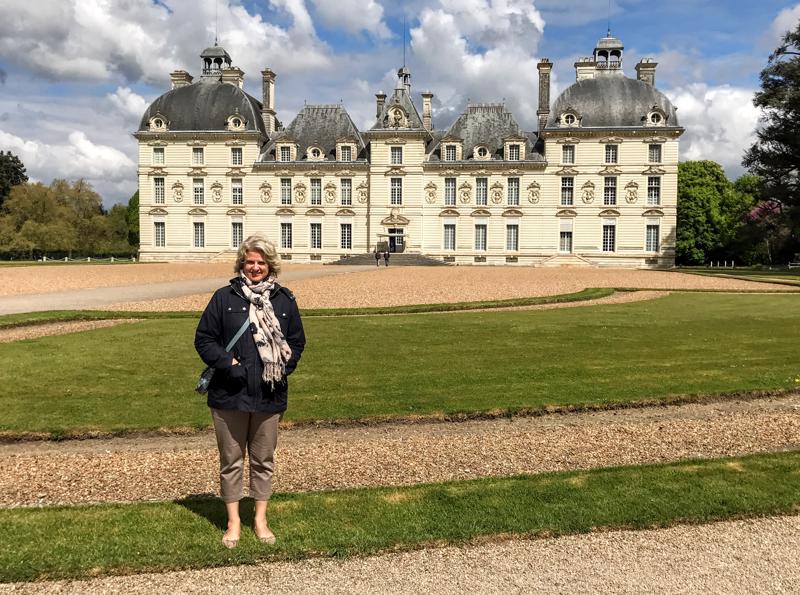
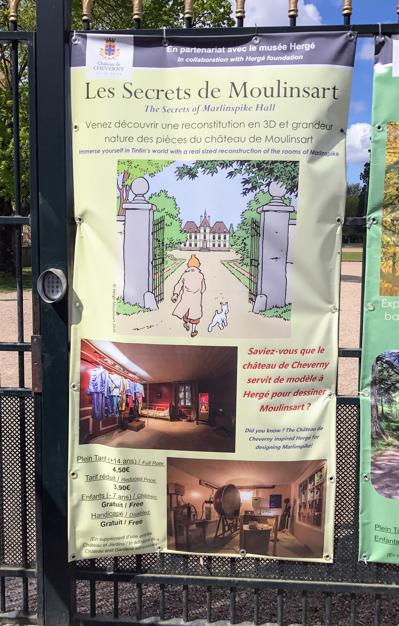
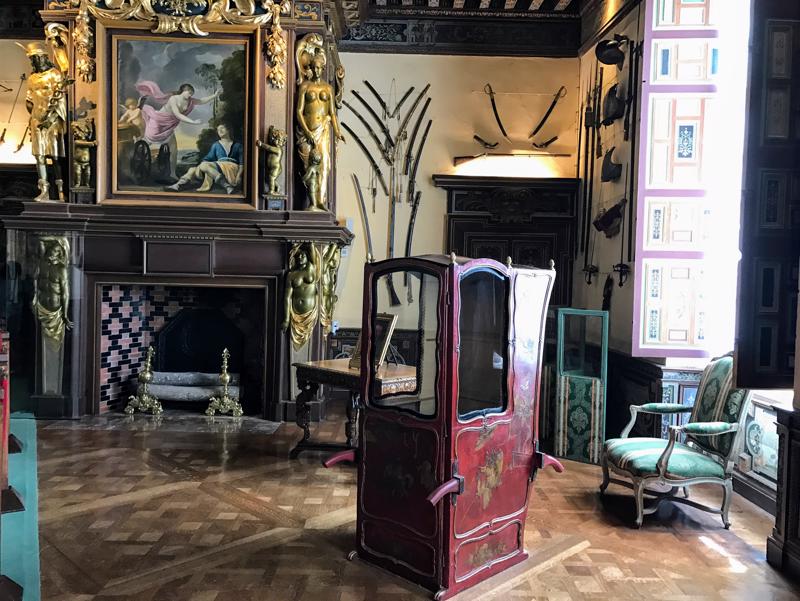
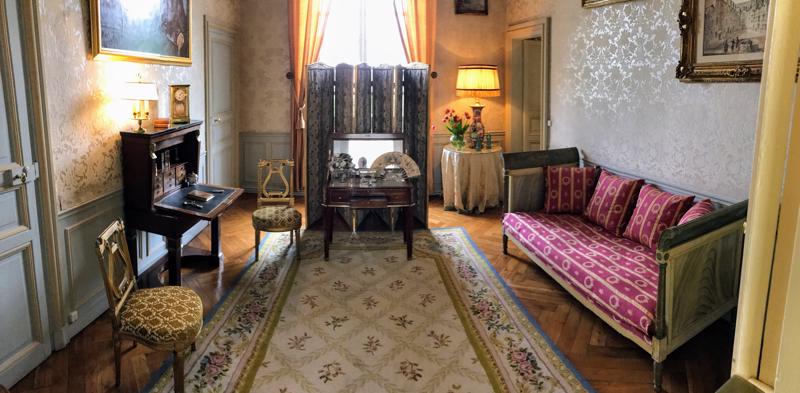

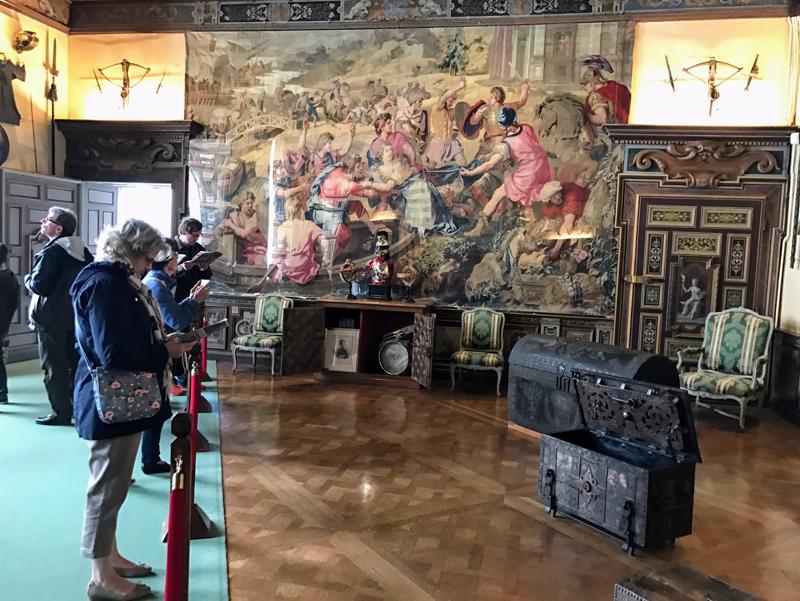
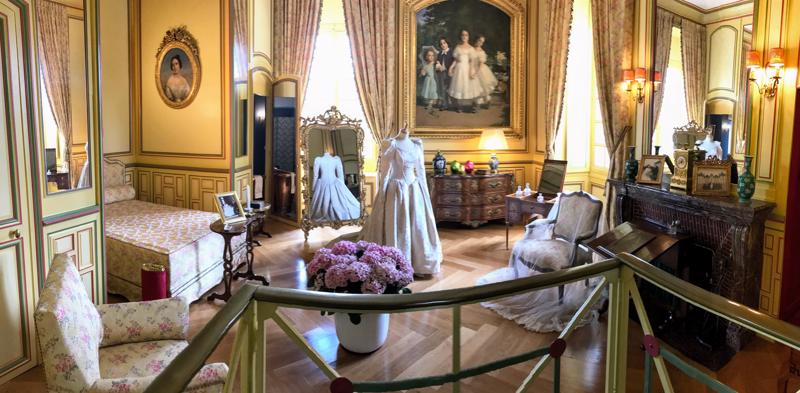
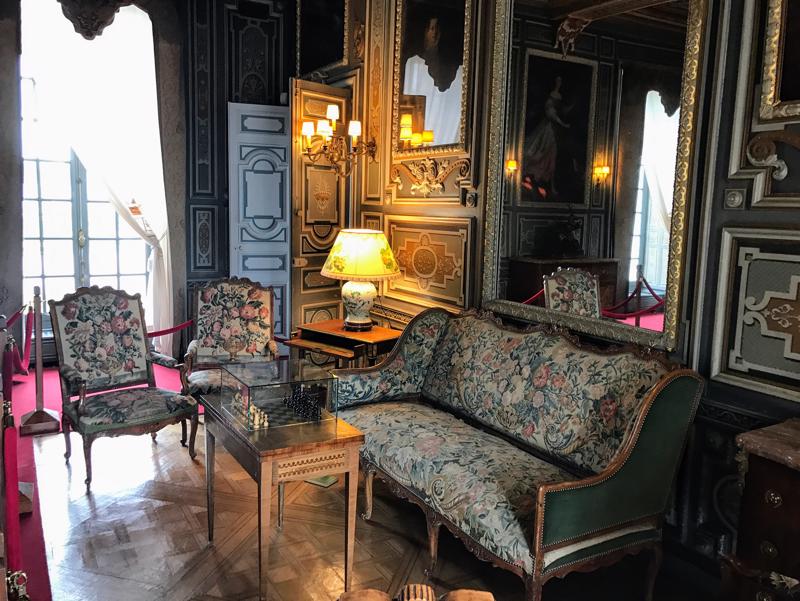
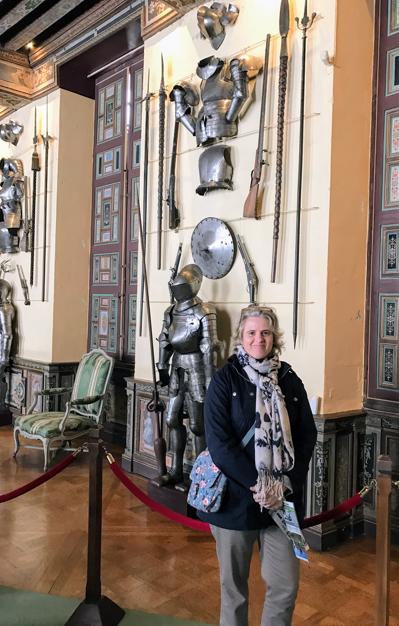
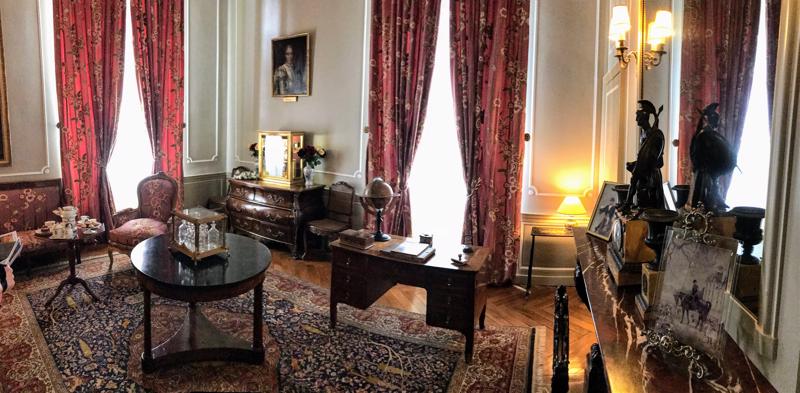
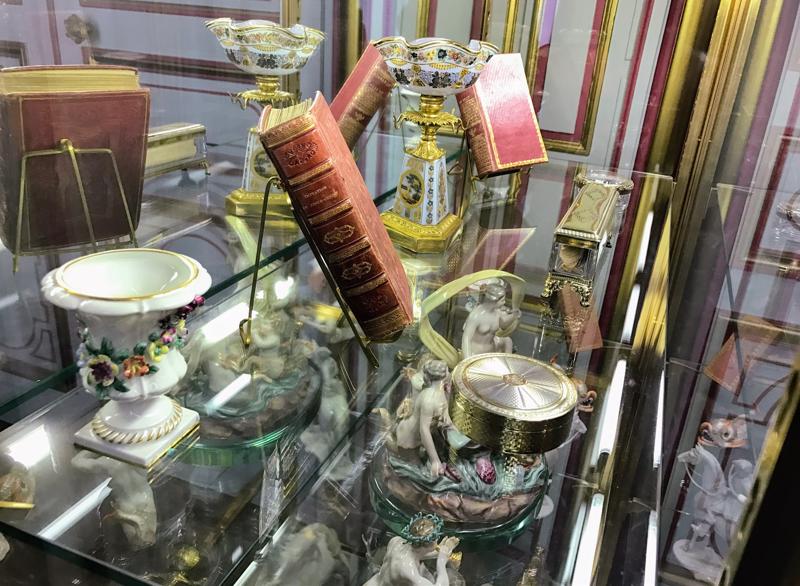
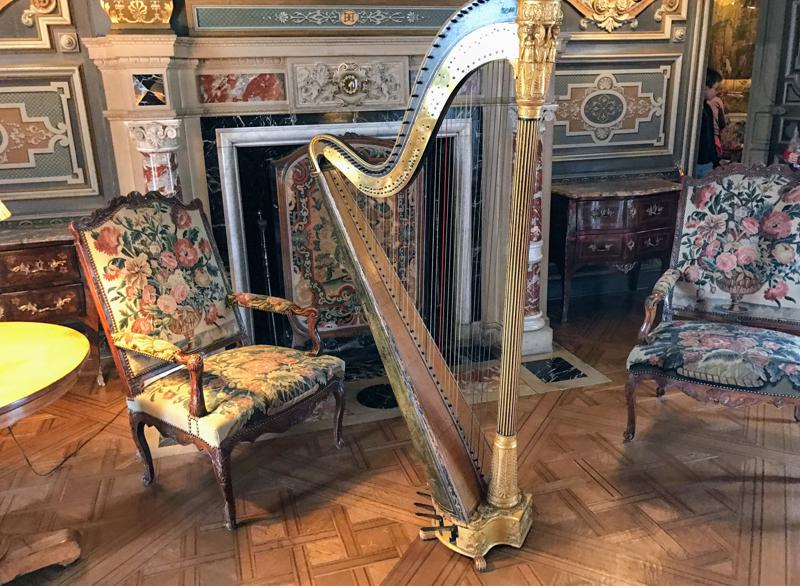


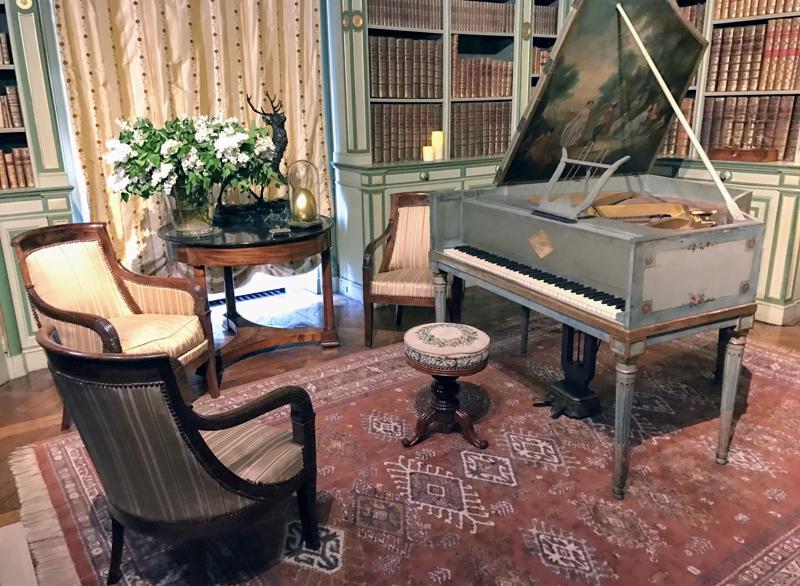
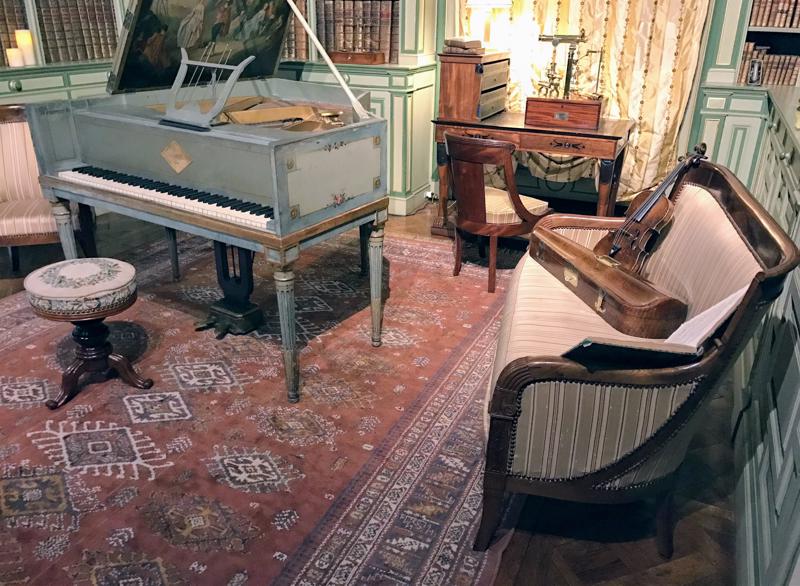
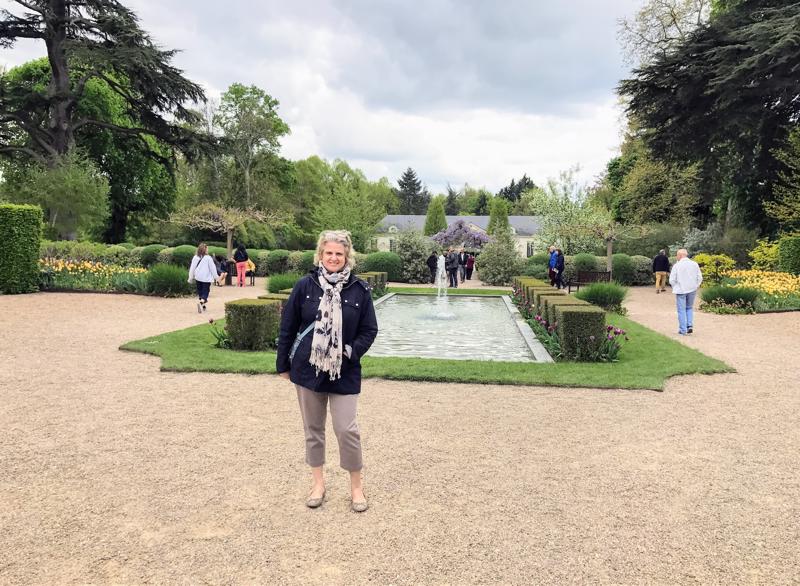
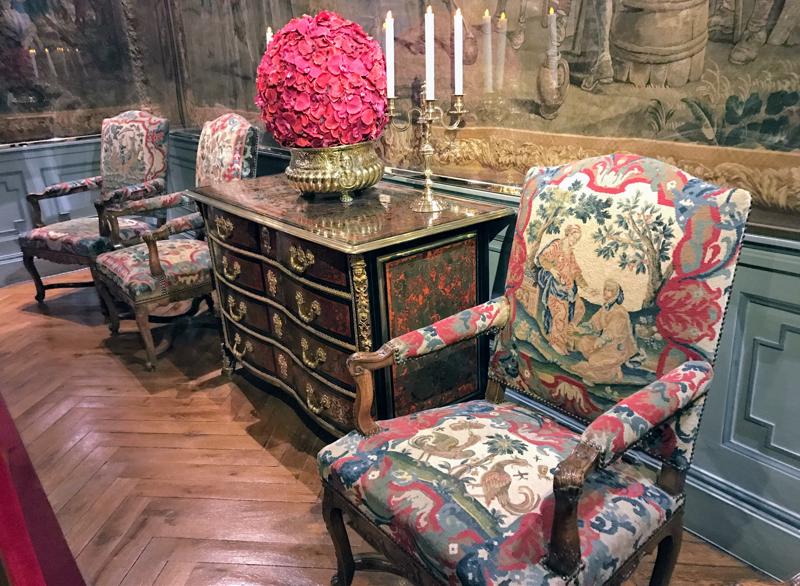
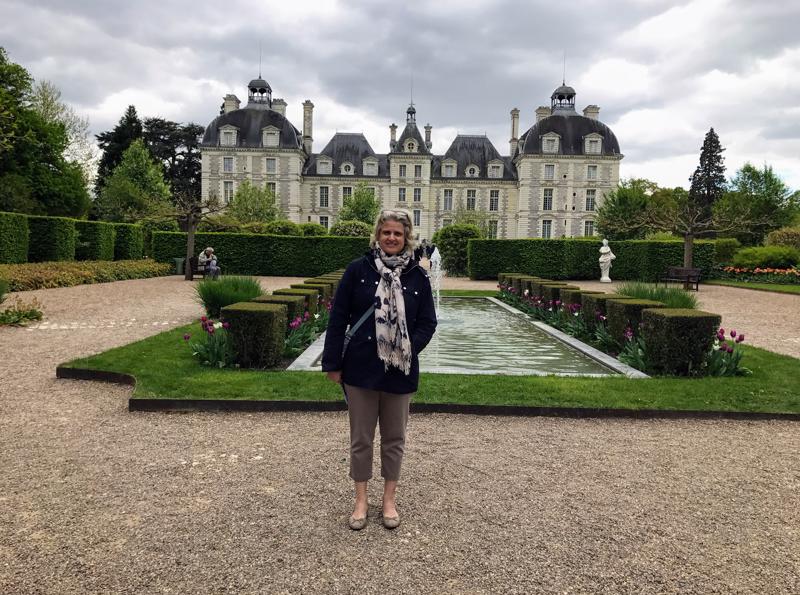
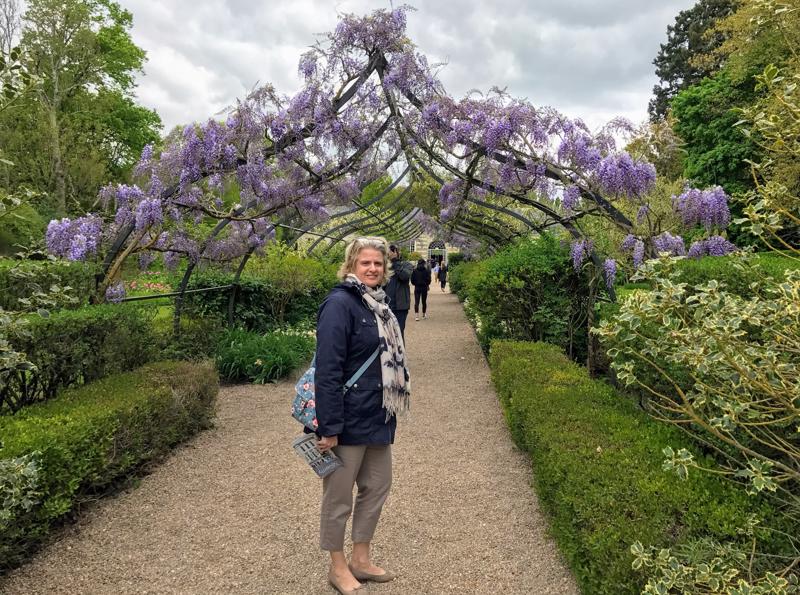
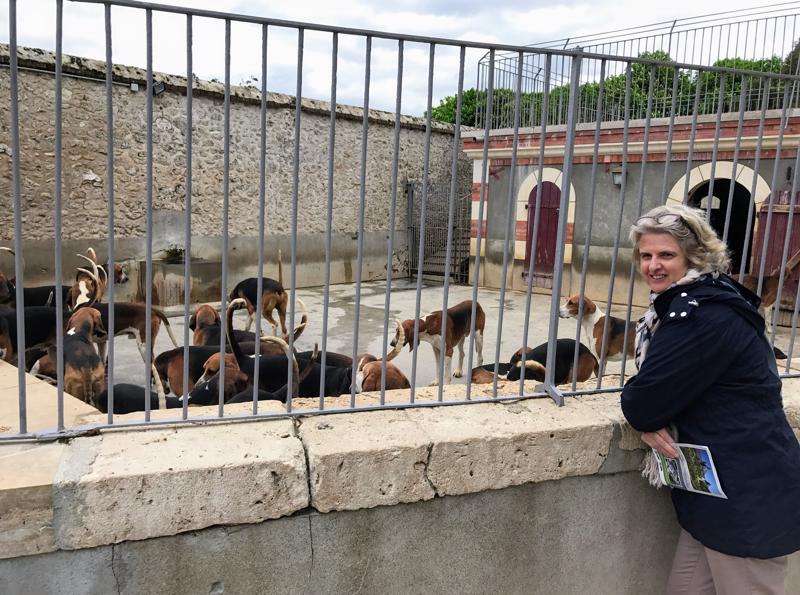
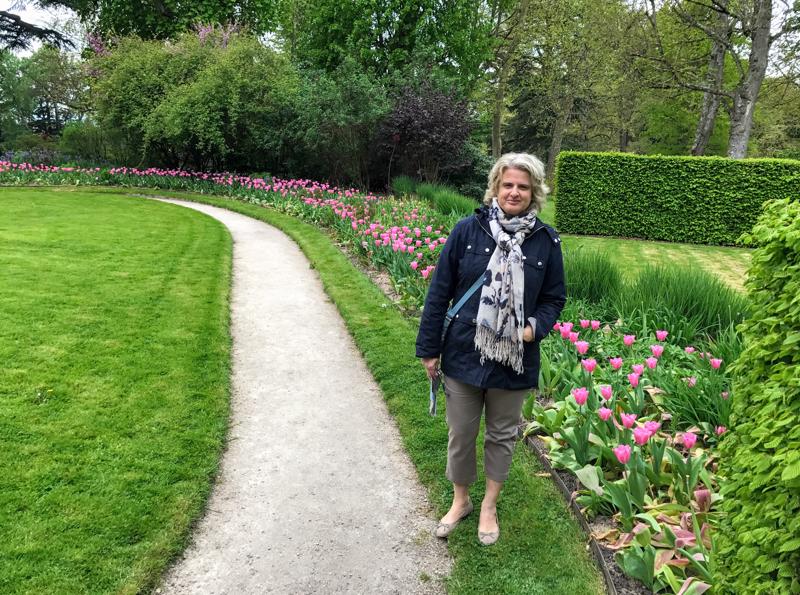
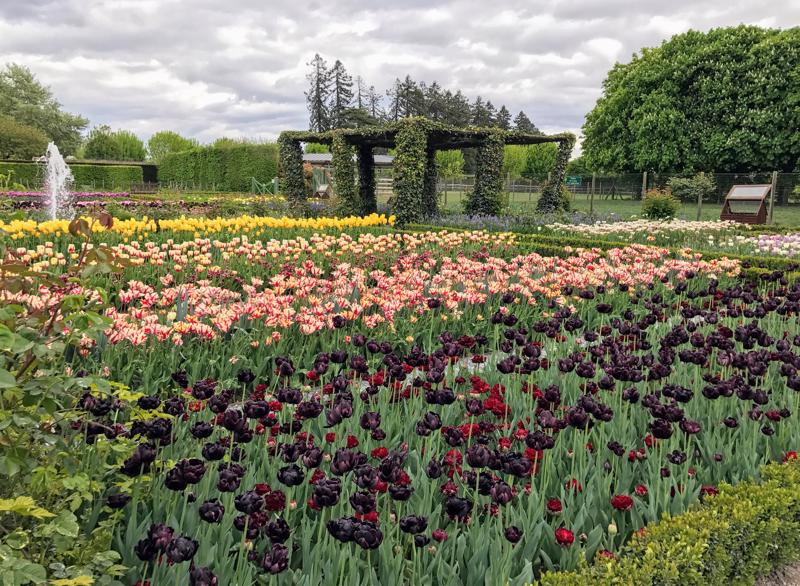
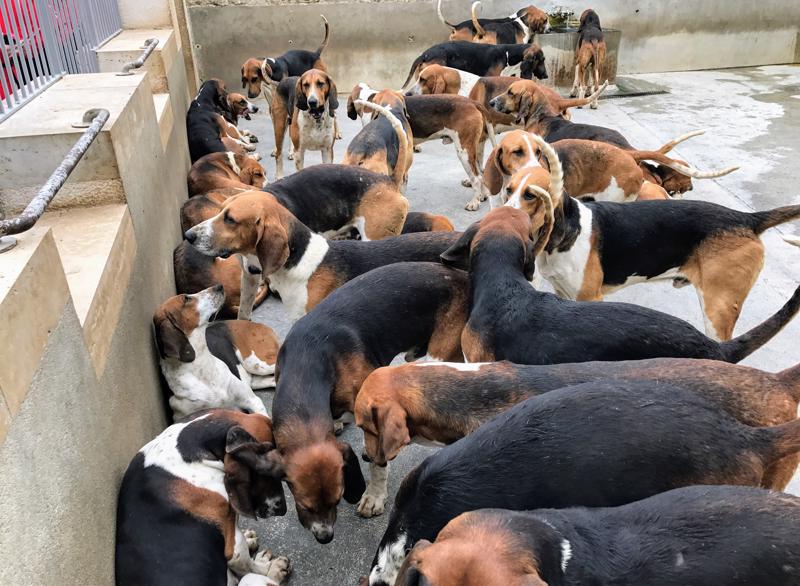
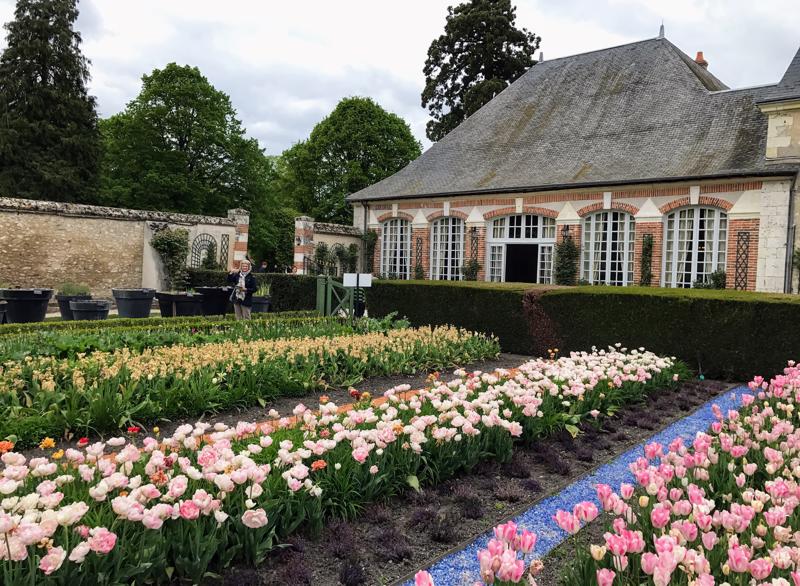
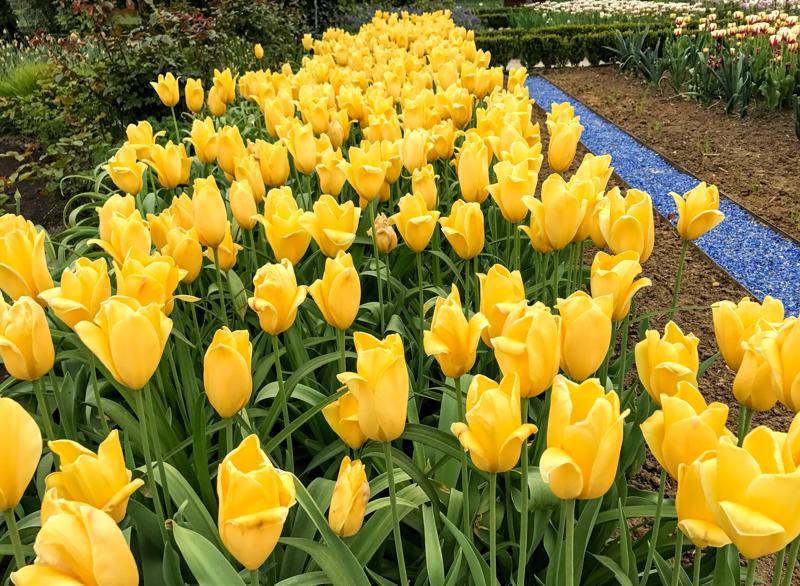
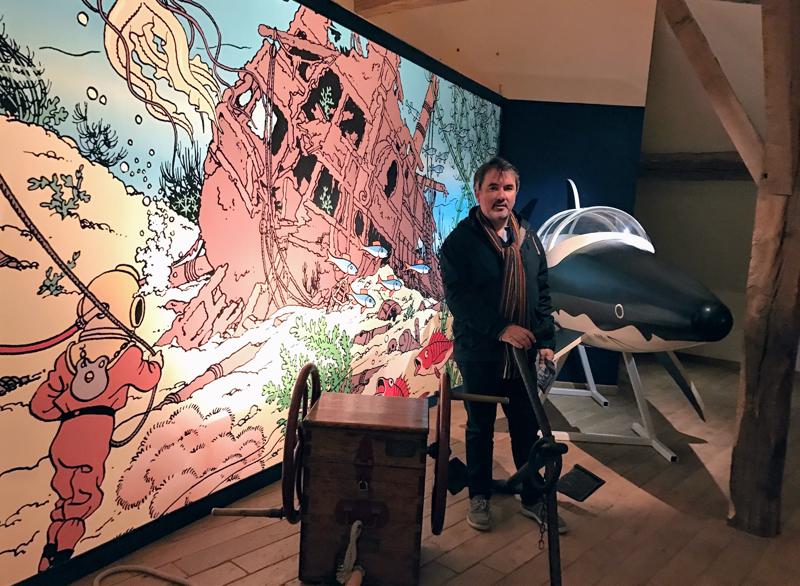
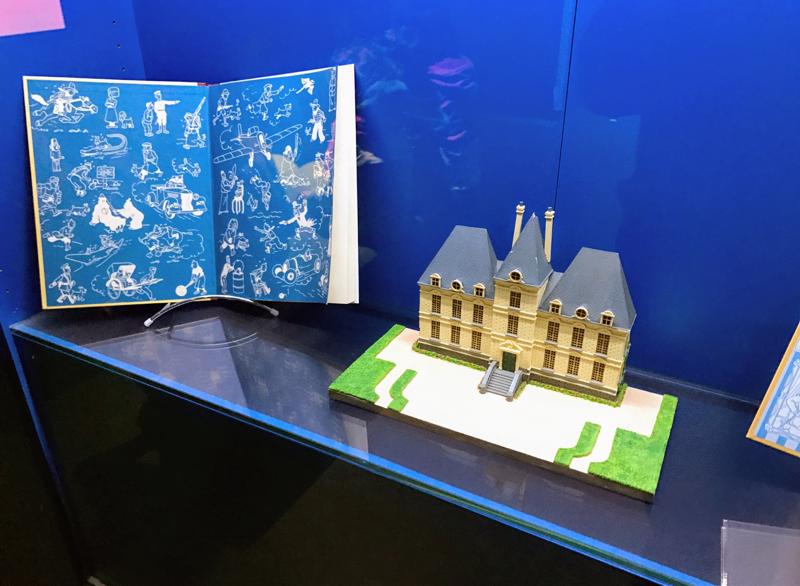
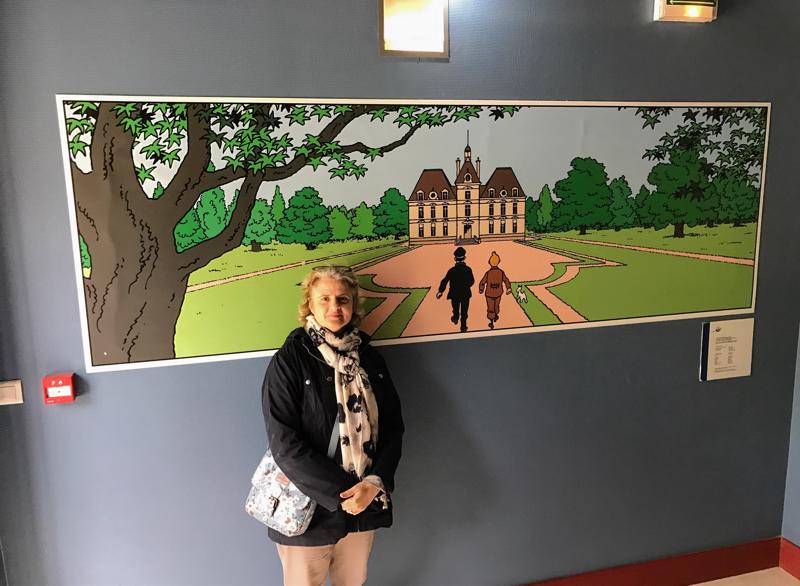
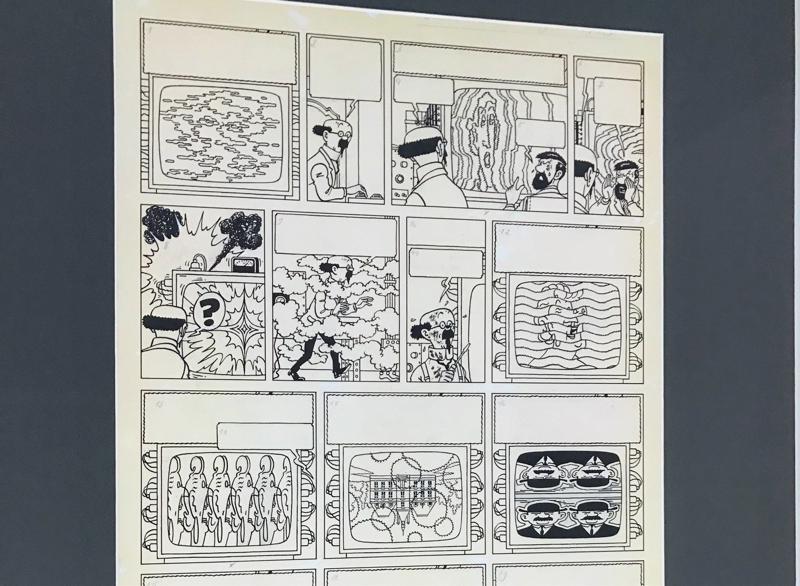
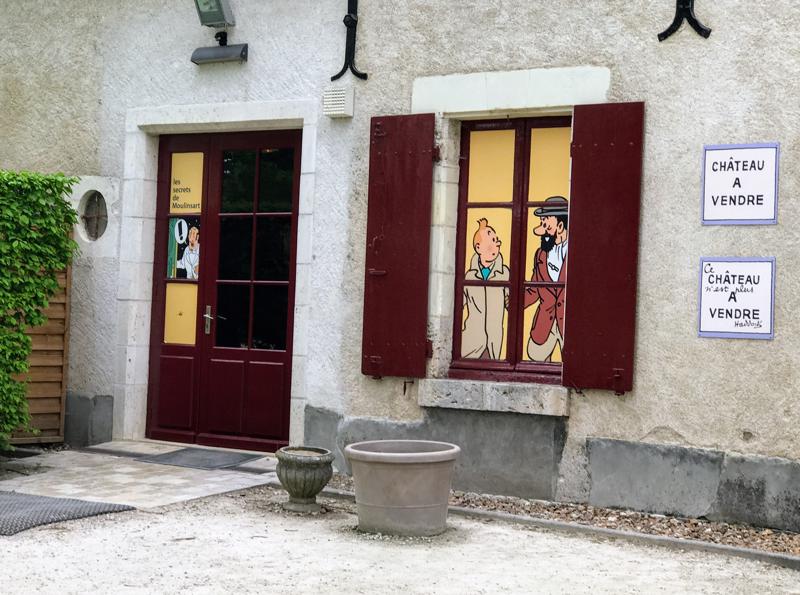
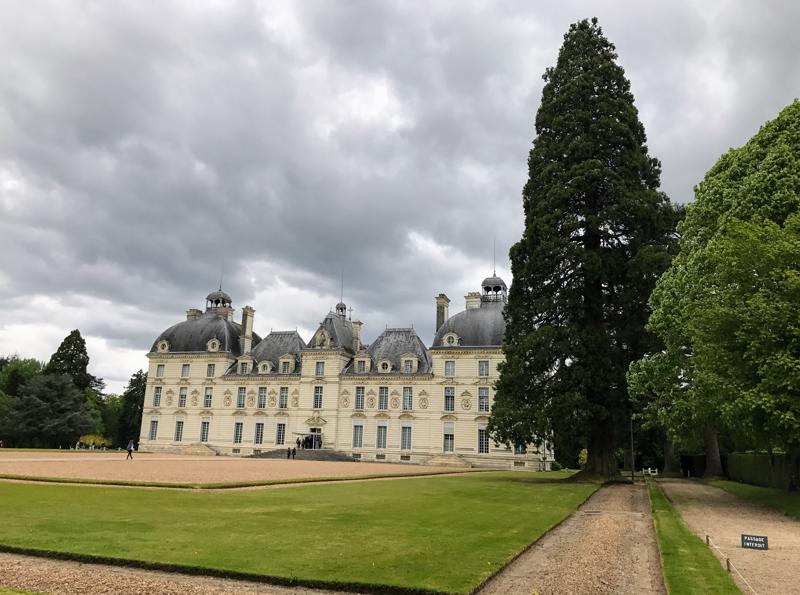
hunting expeditions twice a week during hunting season. The grounds are huge and deer are the prey. It is still legal to hunt deer with hounds and this is organised much like it was when it was the sport of French kings 600 years ago. Each of the main chateaux have their own fenced forests and these are the hunting grounds for the palaces.
Chiverny is also the chateau that inspired Herge to create the mansion which was passed down from Sir Francis Haddock to Captain Haddock in the Tintin books. Herge wrote the books in French and set the home in France and named it Château de Moulinsart in the original French (Marlinspike Hall in the English version).
There was a Tintin exhibition on in one of the estate buildings so we paid the additional entry fee and went through the exhibition. It
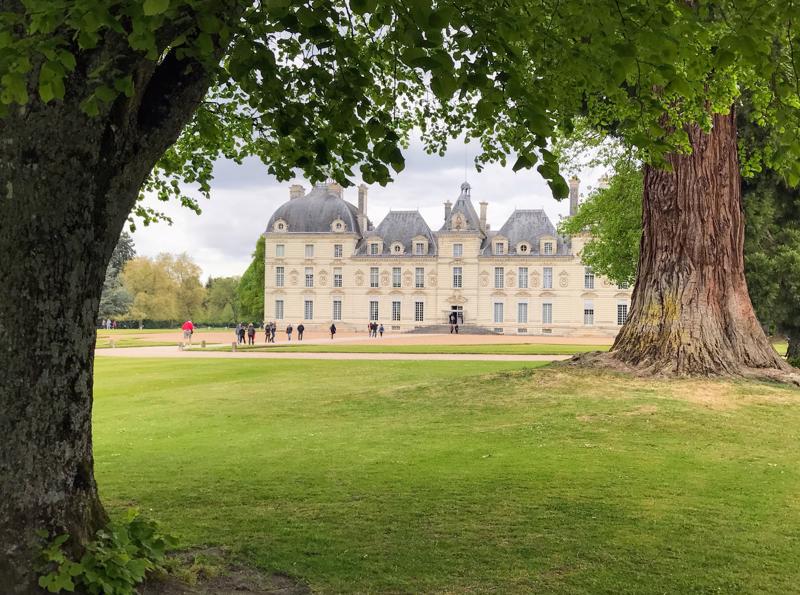
contained some innovative recreations of scenes from Tintin books as well as displaying some of Herge’s original sketches and drawings. It was an unexpected bonus for the visit.
After Cheverny we travelled towards our final palace of the day - Chenoceau. We kept our eyes peeled the whole way for a food shop open as Easter Monday is a serious public holiday in France and almost everything is closed. We found a cafe in the village of Montrichard which was open and we enjoyed steak, toasted cheese sandwiches, baguettes (of course), chips and coffee. The place reminded me in every way of the cafe in Allo Allo. The colourful locals were all in there enjoying a drink and the owner and his wife served us very politely and no-one spoke English. The guy at the table next door had a very long conversation with me (me keeping my mouth full and nodding) before he realised I didn’t speak French. It didn’t seem to perturb him in any way though. A couple from the back of the cafe left and identified themselves to us as Australians from Sydney. They were very relieved just to have someone they could have a conversation with, although the wife did most of the talking and the guy didn’t seem to be that happy to hear his wife having such an animated English conversation in the middle of the French
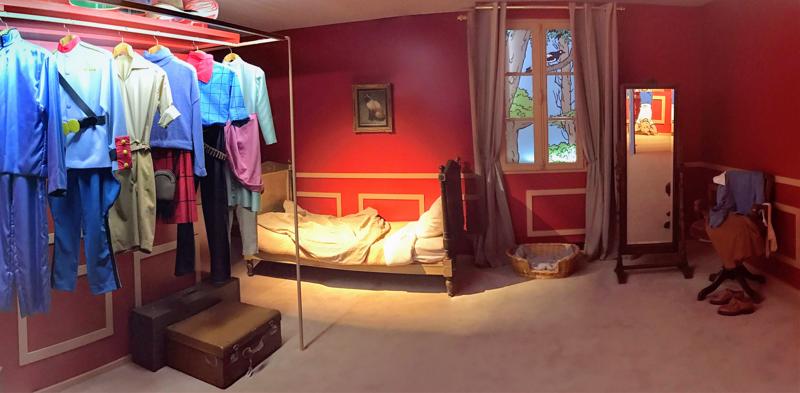
cafe with everyone staring.
After lunch we drove on and arrived at Chenonceau at about 4:30pm. This castle is truly amazing. It was originally built beside the Cher river, but then it was extended as a bridge over the river with a drawbridge access on both sides of the river, then three stories of long gallery rooms were built on the bridge section. It stands in and alongside the Cher river in the most awe-inspiring way.
In WW1 the long rooms above the river were used as a hospital for war wounded at the expense of the owner. In WW2 the Cher river formed the demarcation line between the German occupied zone and the Free French zone. This castle was the only bridge over the river so it was used as an escape route for resistance fighters, spies and Jews who needed to escape France and make their way to England via Spain. The Germans regularly patrolled the area, but the
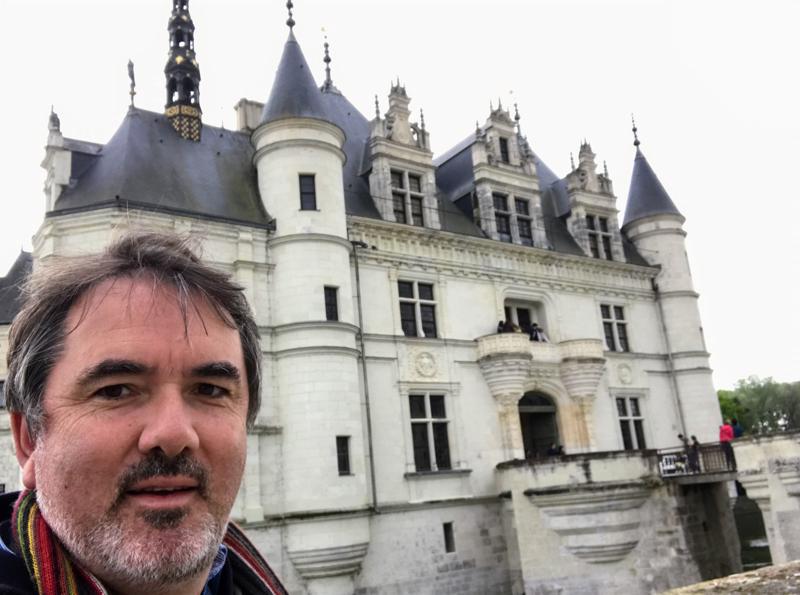

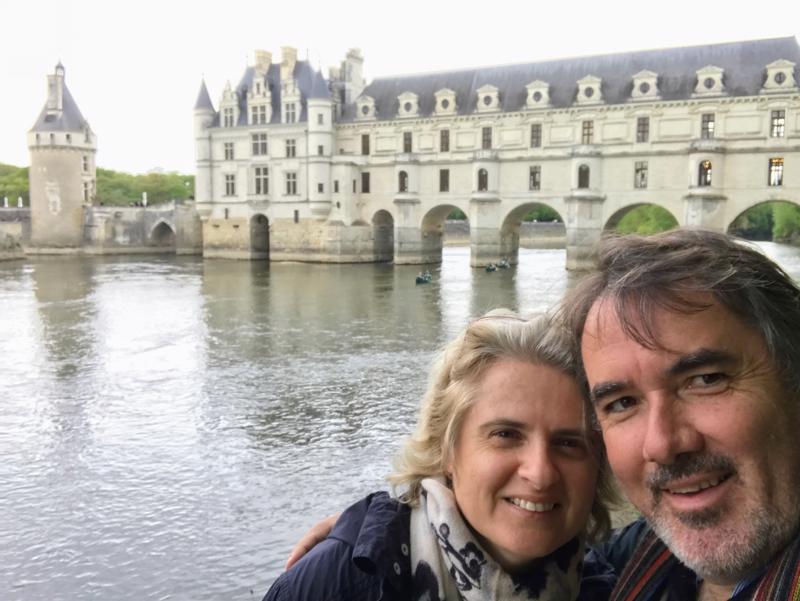
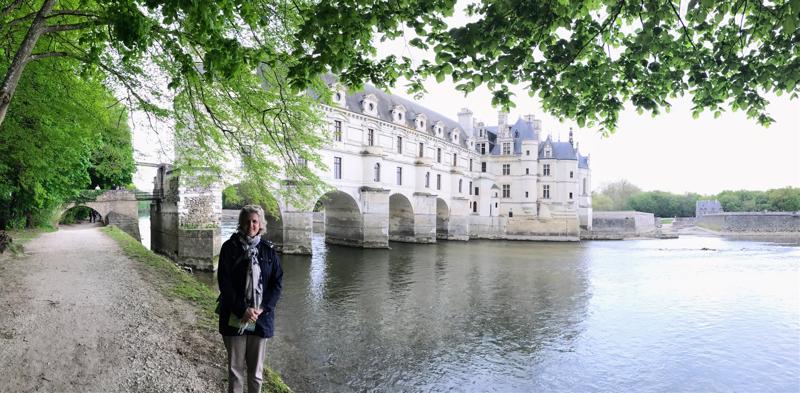
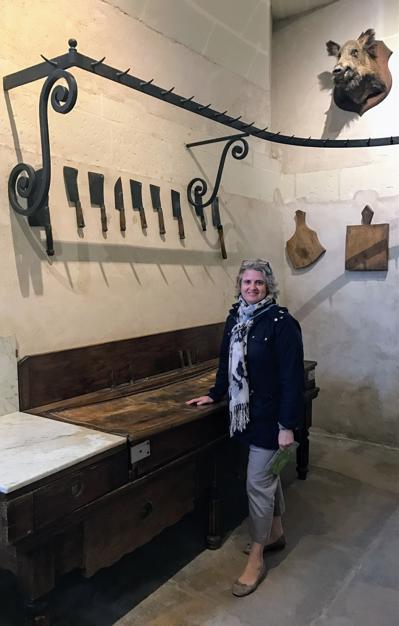
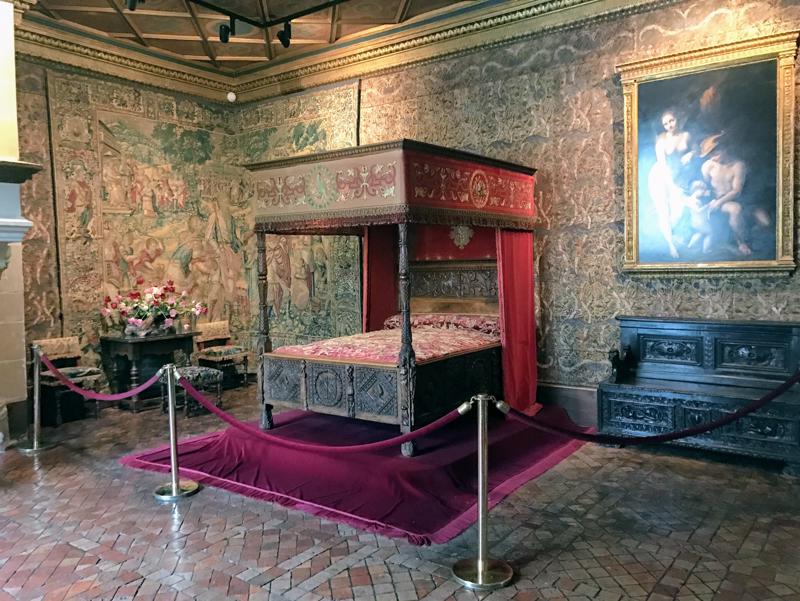
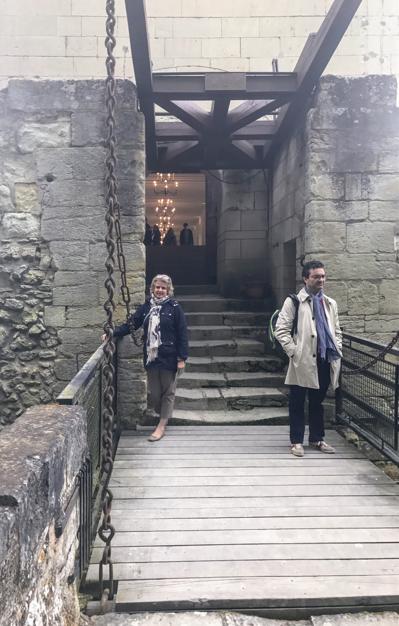
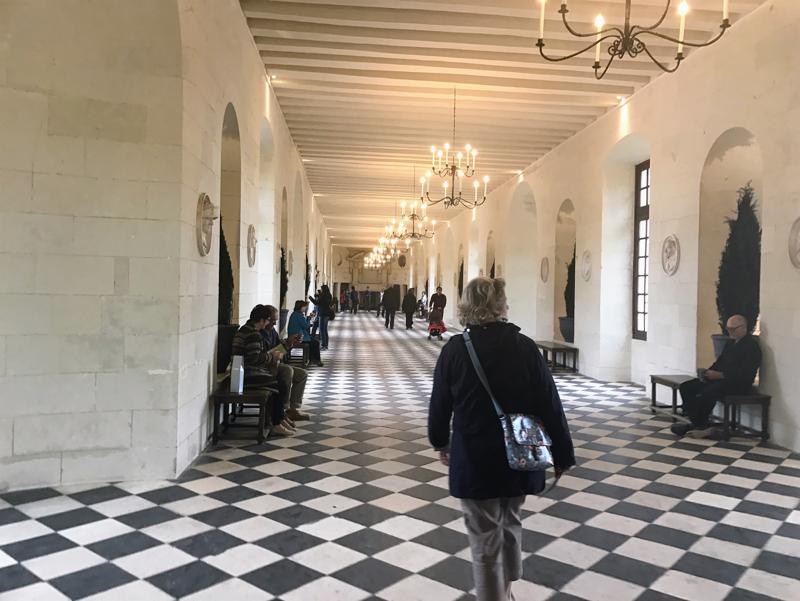
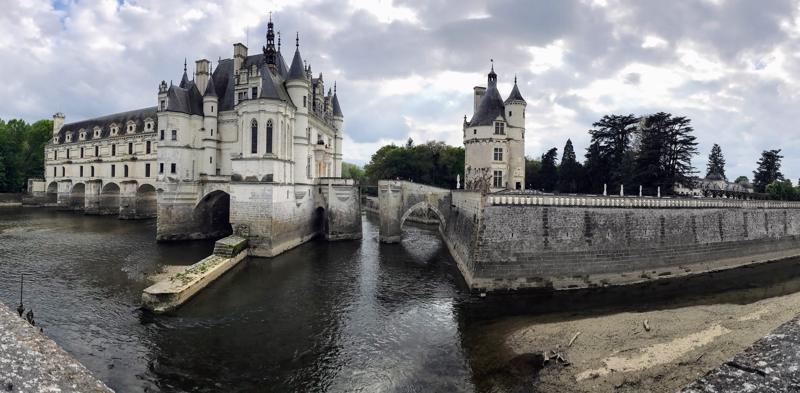
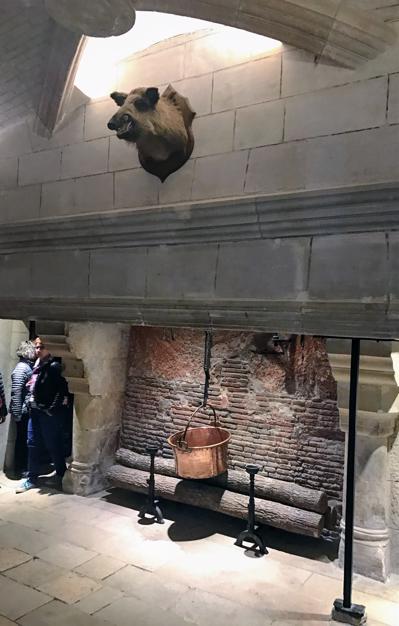
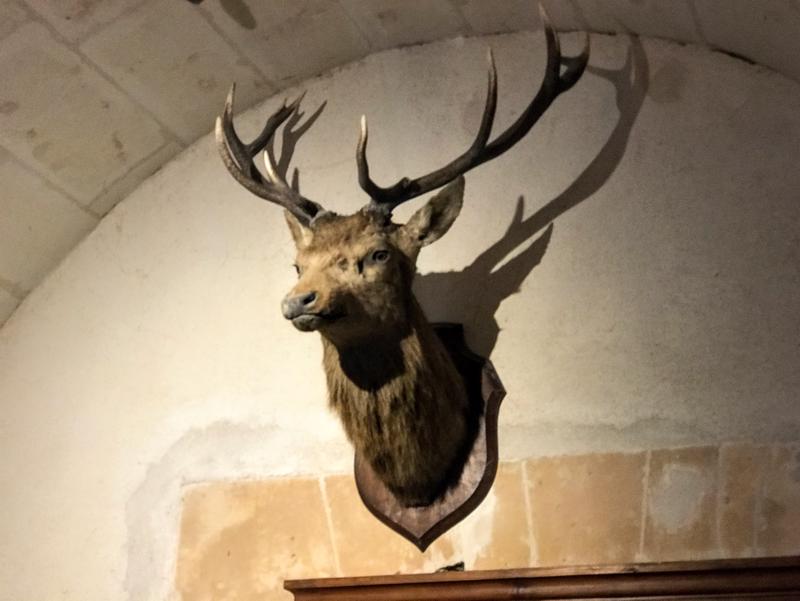
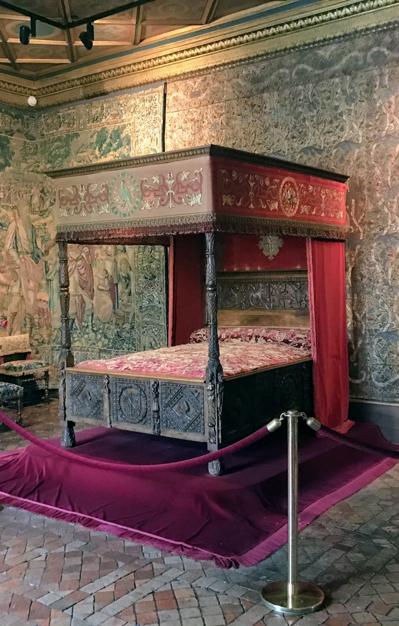
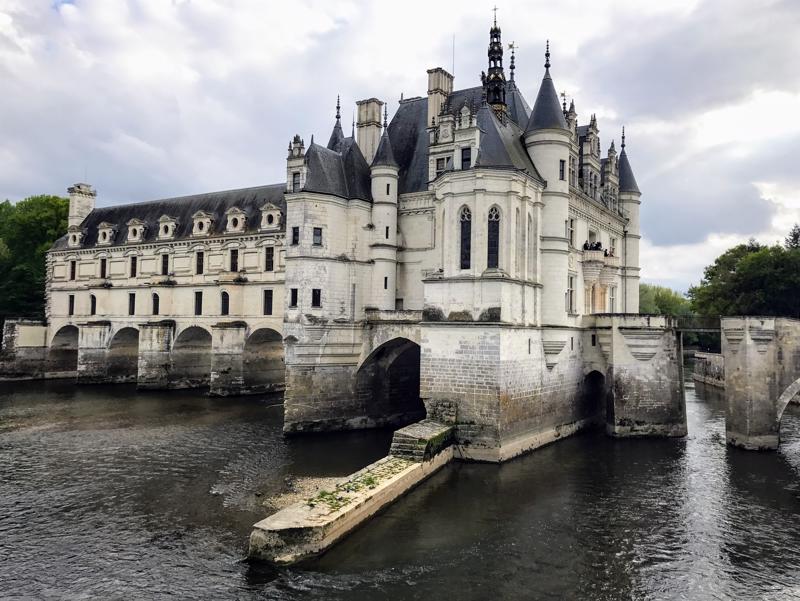
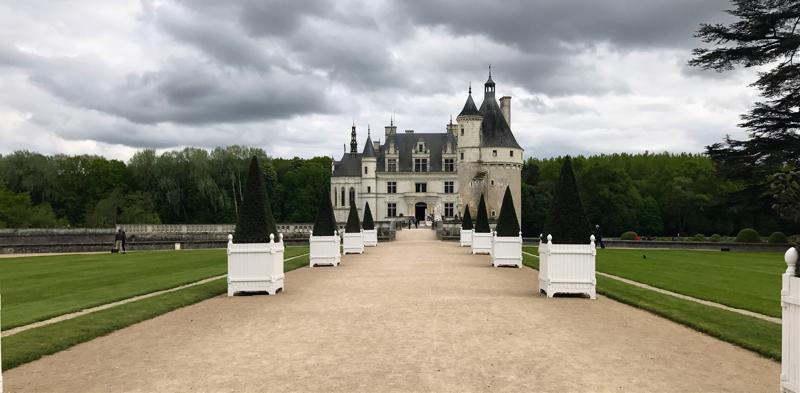
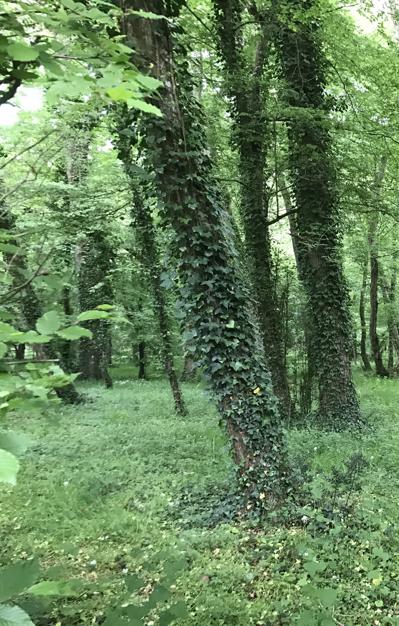
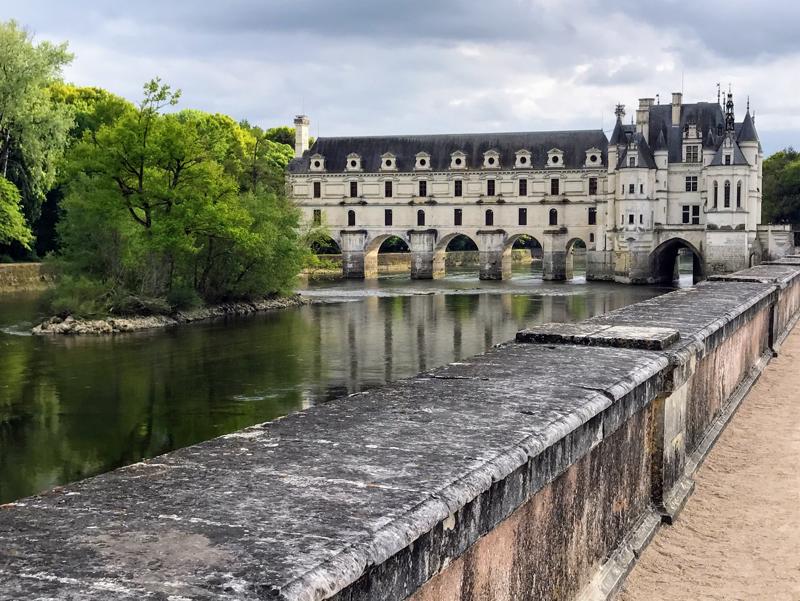
owner kept the access locked until the coast was clear and then opened the drawbridge and let those fleeing escape into the forest on the southern side of the river.
We drove back to our apartment in Tours by 7:30pm. We enjoyed a simple dinner before getting a relatively early night. Tomorrow we visit another chateau before driving back to Paris to catch the plane to Nice at 4:00pm from Orly Airport. I organised to drop the hire car at Orly airport so it is a simple task, hopefully, of dropping the car and catching the plane, then picking up another car in Nice in which to drive to Cannes to our next apartment.
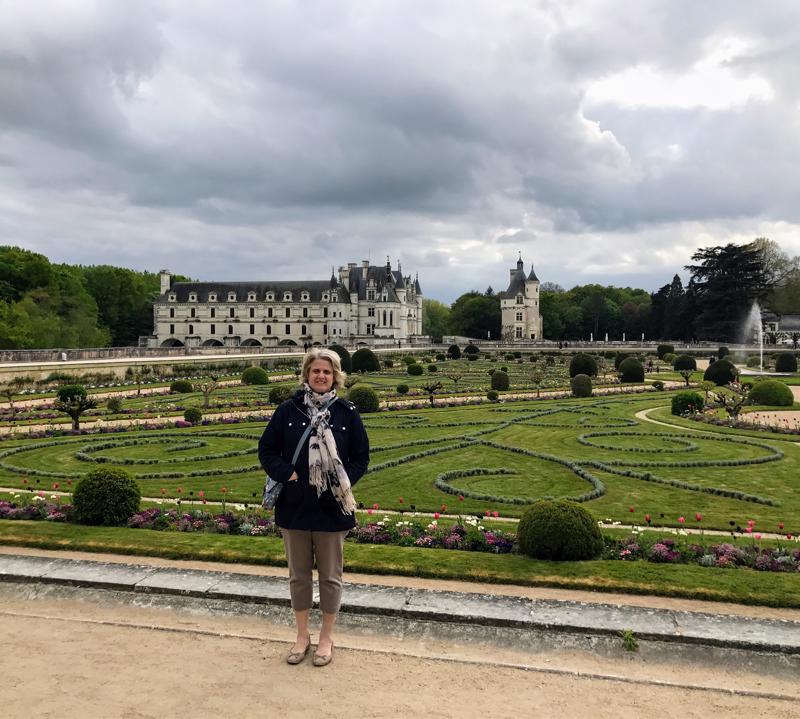
1.
Last Minute Packing
2.
Day of Departure
3.
First Day in Paris
4.
Second Day in Paris
5.
Third Day in Paris
6.
Fourth Day in Paris
7.
Fifth Day in Paris
8.
Sixth Day in Paris
9.
Seventh Day in Paris
10.
Eighth & Final Day in Paris
11.
Driving to Tours
12.
Exploring Royal Palaces
13.
Tours to Cannes
14.
St Tropez
15.
Nice and Monaco
16.
Back to Paris
17.
Leaving on a Jet Plane
Share your travel adventures like this!
Create your own travel blog in one step
Share with friends and family to follow your journey
Easy set up, no technical knowledge needed and unlimited storage!